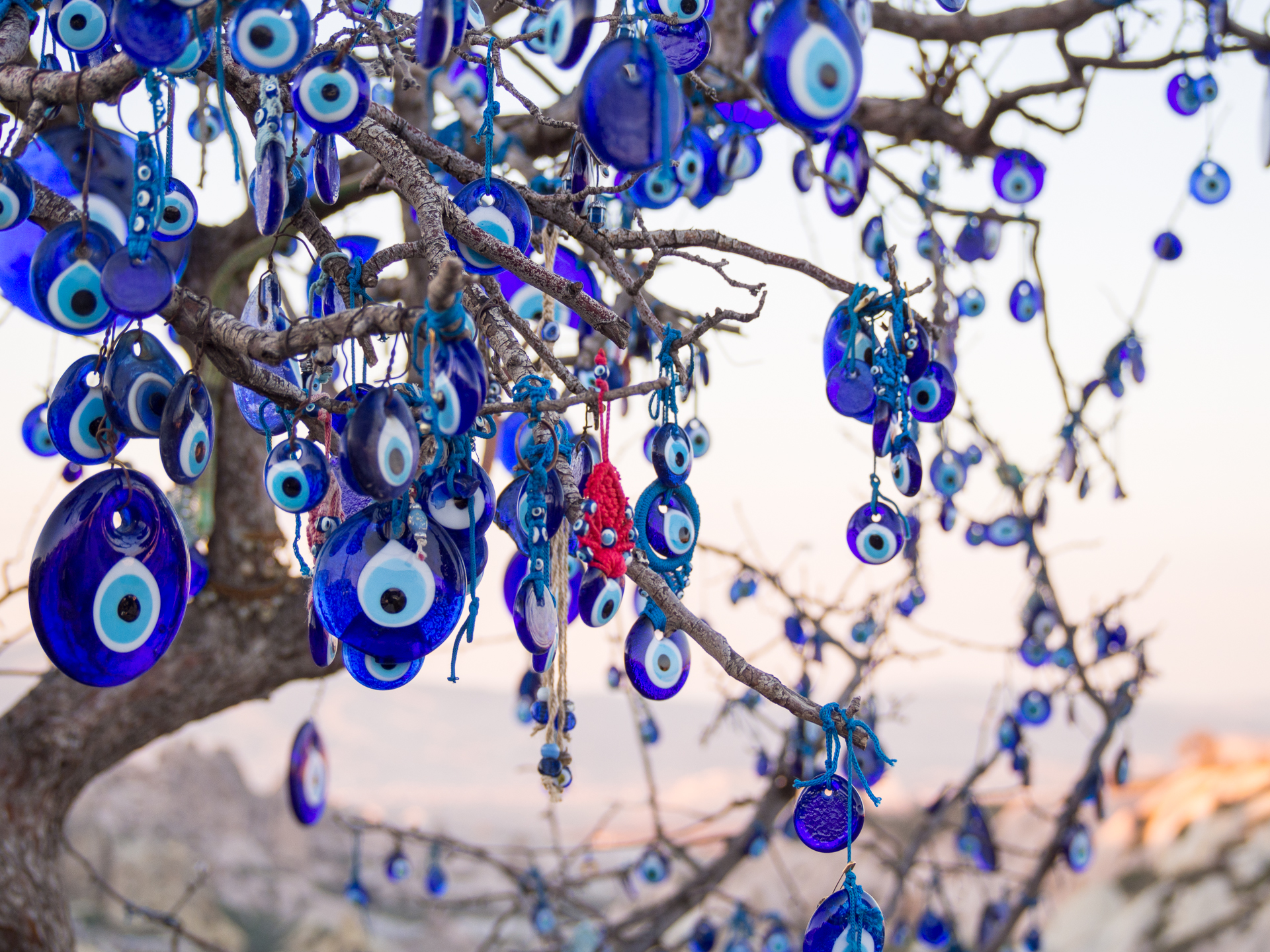Origins
After hearing about all these traditions and ceremonies, you probably wonder what the exact origins are. I have now told you about Surinamese traditions to ward off the evil eye, but the belief in the evil eye is not only prevalent in Suriname. Many other cultures have their own ways of protecting themselves from the evil eye. The most well-known ones are probably the Turkish nazar boncuğu (evil eye amulet) and the Middle Eastern khamsa (five in Arabic, reference to the five fingers of the open hand). You can also see these amulets on the streets in the Western world as fashion, but they were originally intended to protect people from the evil eye. In Ancient Greece there was also a strong belief in the evil eye. Thus, it is not so easy to trace the exact origins of this belief.
The origins of the traditions are not well-known either. I spoke to an elderly woman from Suriname who now lives in the Netherlands, and she proudly told me she always takes some sarpusu with her from Suriname for herself and her friends who ask her to, as it is not available anywhere in the Netherlands. When asked what was so special about the fabric that it cannot be produced in the Netherlands and she has to travel all the way to Suriname for it, she told me she did not know – all she knew was that it was a special fabric, and that was all that mattered. She knows that it works to prevent illness, so the means of production or sacredness of the fabric are not very relevant to her.
I also asked her about blauwsel. She told me it is used to protect babies, so I asked her how this protection works, to which she answered that she didn’t know. “I was born into the tradition, I don’t know why it’s like that, just that it’s always used”, she said. Upon being asked why she had also used blauwsel to protect her own children, her answer was: “Well, everyone does it.”
This conversation is illustrative for the general lack of awareness of origins of traditions and rituals. Sometimes, people perform rituals and traditions simply because they are part of the culture, without truly knowing why the ritual is the way it is, or where it came from. This makes it difficult to appoint cultural ownership of certain traditions. As we have seen, the belief in the evil eye has been prevalent in many other cultures besides the Surinamese one. Does this mean these other cultures should have no right to practice their rituals? Or does this mean that we should conduct extensive research to find out which region the ritual came from originally, and forbid any other region or country to continue their practices and rituals that protect against the evil eye? When does a tradition become property of a country, or at least such a big part of a culture that it is inextricably intertwined with people’s cultural expression?
These are very difficult questions to answer, and they make us wonder how productive it really is to appoint an owner for every cultural expression.
](https://micrio.thingsthattalk.net/oBmIW/views/max/171x128.jpg)
](https://micrio.thingsthattalk.net/aWuMh/views/max/191x128.jpg)
](https://micrio.thingsthattalk.net/gZbYG/views/max/128x128.jpg)